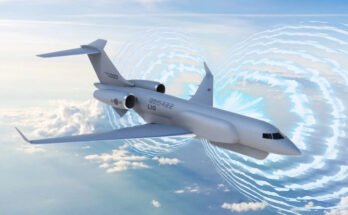by Dan Darling, International Military Markets Analyst, Forecast International.
The Indian Ministry of Defense – acting upon the Navy’s formal requirement for 57 multirole carrier-based fighters (MRCBFs) – has issued a Request for Information (RFI). The RFI comes with multiple queries, which range from weapons payload capability to license production agreements to transfer of technology. And, it also sends a signal that the effort to develop an indigenous naval fighter variant – via state-owned Hindustan Aeronautics Ltd’s version of the Tejas Light Combat Aircraft (the LCA-Navy) – faces further hurdles.
Thus, it appears that, in the near term, the Navy and MoD will opt for a foreign-sourced off-the-shelf solution. The three most likely candidates being Boeing’s F/A-18E/F Super Hornet, French Dassault’s Rafale M, and Russian RAC’s MiG-29K. The latter is already in Indian naval service; it forms two operational squadrons that embark on the INS Vikramaditya (a revamped version of the ex-Soviet aircraft-carrying missile cruiser Admiral Gorshkov).
The Indian Navy plans to operate three aircraft carrier battle groups by 2027, replete with combat aircraft and helicopters that deploy from the deck are supported with P-8I Poseidon maritime reconnaissance aircraft.
INS Vikrant (Courageous), the first of two new indigenous aircraft carriers, is expected to be inducted into service around 2019. Like the INS Vikramaditya, the Vikrant will operate the MiG-29K, as it features a ski-jump ramp on its bow with short take-off and arrested recovery. But the final configuration of the third carrier (the second indigenous variant) – currently designated IAC-II – has yet to be determined. Earlier reports indicated that the Navy was leaning towards a catapult-launched, arrested landing (CATOBAR) aircraft.
The new multirole fighters will operate from these two indigenous carriers.
Meanwhile, efforts to develop the LCA-Navy – the first prototype of which flew on April 27, 2012 – are ongoing. The Aeronautical Development Agency has stated that it expects the LCA-Navy Mk2 prototype to begin flying around 2020, indicating that the more modern variant – which will feature a GE Aviation F414 engine, active electronically scanned array (AESA) radar and an internal electronic warfare suite – remains far beyond any near-term operational timeline.
In the past, the Navy has seemed willing to move forward with a 50-unit purchase of the LCA-Navy fighter. However, senior naval officials have recently reached out to Dassault for a briefing on how the Rafale might meet their future carrier-borne fighter needs – reportedly following a government directive. This raises the question as to whether the government and the Navy share the same outlook on the need for nearer-term foreign-based fighter solutions.
More to the point, it places in doubt whether a place for the LCA-Navy remains in the Indian Navy’s near- and medium-term carrier-based fighter composition.
Please feel free to use this content with Forecast International and analyst attributions, along with a link to the article. Contact Ray Peterson at +1 (203) 426-0800 or via email at ray.peterson@forecast1.com for additional analysis.
The Forecast International International Military Markets series examines the military capabilities, equipment requirements, and force structures inventories of 140 countries, with corresponding coverage of the political and economic trends shaping the defense market outlook for individual countries and regions.
For 50 years, Forecast International intelligence reports have been the aerospace and defense industry standard for accurate research, analysis, and projections. Our experienced analysts compile, evaluate, and present accurate data for decision makers. FI's market research reports offer concise analysis of individual programs and identify market opportunities. Each report includes a program overview, detailed statistics, recent developments and a competitive analysis, culminating in production forecasts spanning 10 or 15 years. Let our market intelligence reports be a key part of reducing uncertainties and mastering your specific market and its growth potential. Find out more at www.forecastinternational.com



